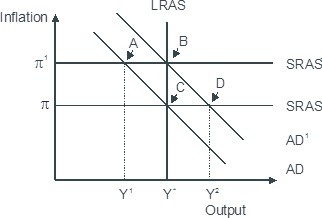If we wanted to consider all the money that had been "multiplied" in the economy, we would think about:
A. M2.
B. M1.
C. hard money.
D. None of these.
Answer: A
You might also like to view...
The U.S. monetary policy implemented in 2008 was an attempt to
A) give billions of dollars to businesses and low- and middle-income Americans in order to stimulate business investment and consumption expenditure and thereby increasing AD. B) decrease interest rates in order to stimulate business investment and consumption expenditure, thereby increasing SAS. C) decrease interest rates in order to stimulate business investment and consumption expenditure, thereby increasing AD. D) decrease the exchange rate in order to boost net exports, thereby increasing AD.
Which of the following is TRUE regarding markets? I) Economists define a market as a geographic location where trade occurs. II) A market enables buyers and sellers to get information about each other and to buy and sell from each other
III) Markets coordinate decisions through prices. A) I only B) I and III C) II and III D) I, II and III
Based on the figure below. Starting from long-run equilibrium at point C, an increase in government spending that increases aggregate demand from AD to AD1 will lead to a short-run equilibrium at point ________ creating _____gap. 
A. D; an expansionary B. B; no output C. B; expansionary D. A; a recessionary
Recall the Application the Joint Committee on Taxation and how Congress accounts for the dynamic effects of its policies to answer the following questions.Recall the Application. The Joint Committee of Taxation (JCT) only started to consider the macroeconomic effects of tax cuts starting:
A. 2015. B. 2014. C. 2016. D. 2013.